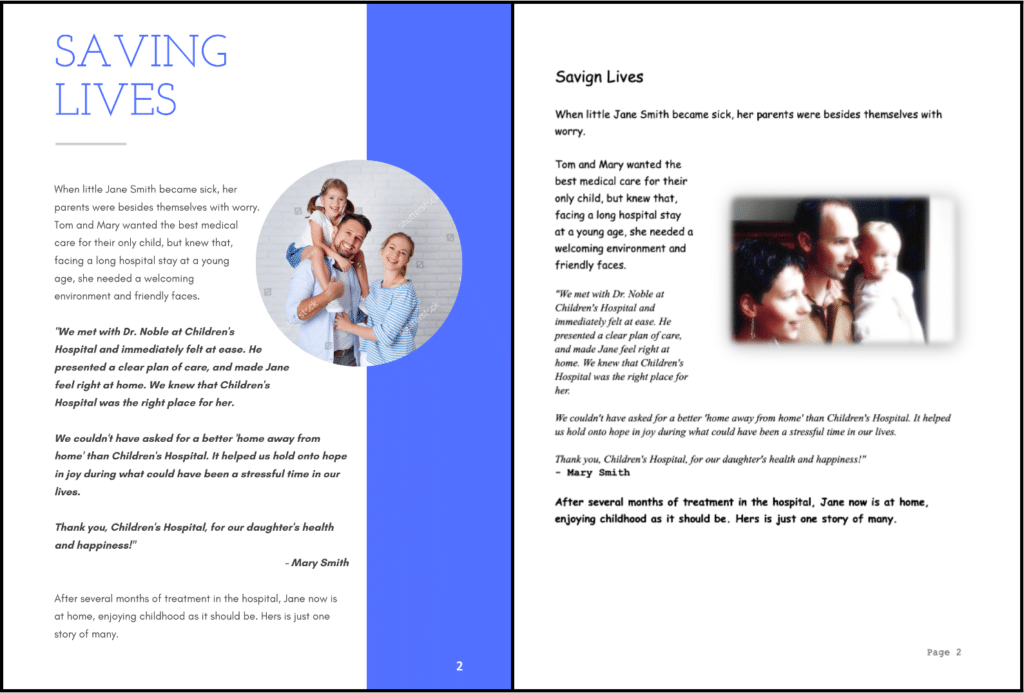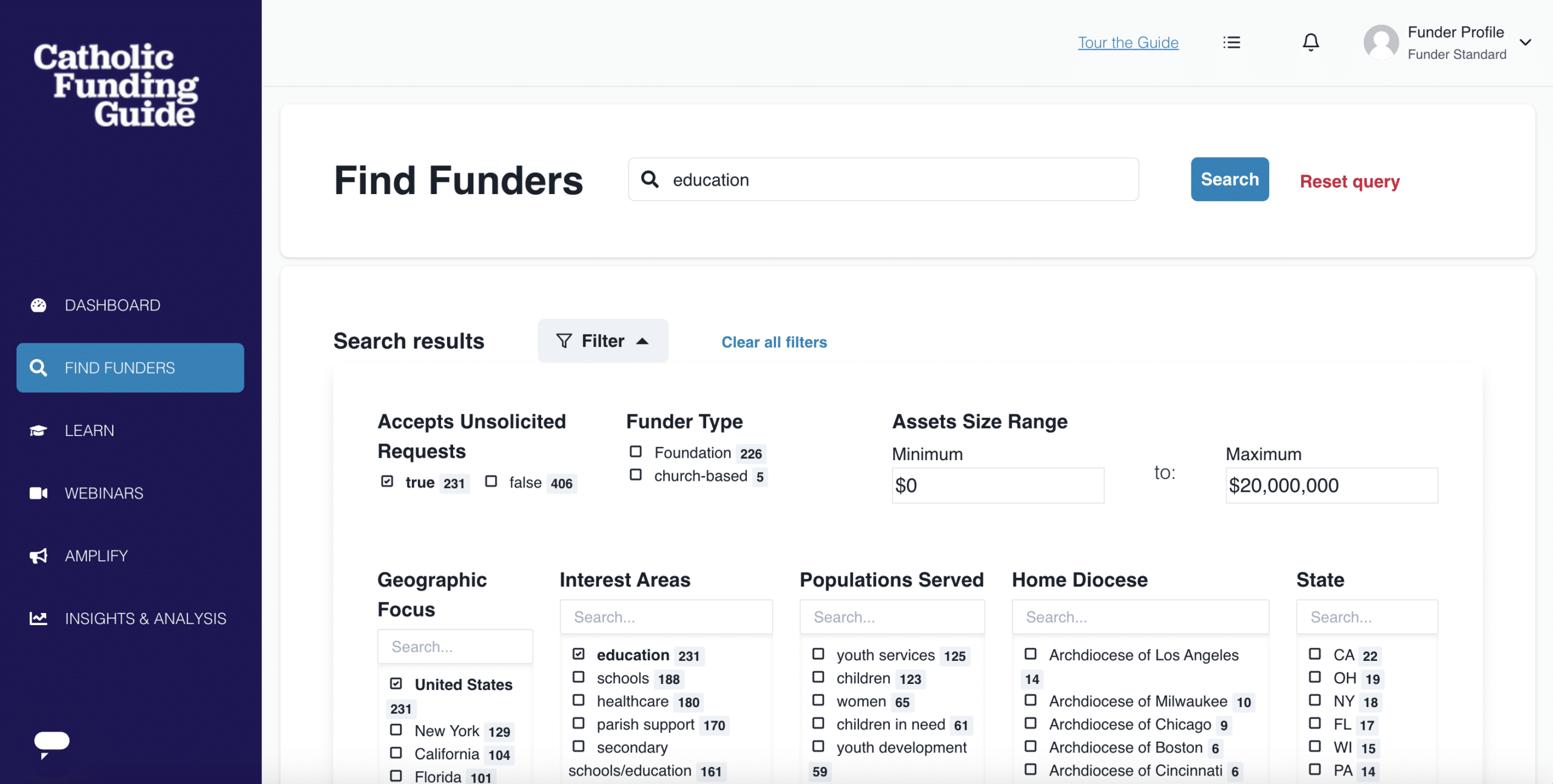What is a case for support (or case statement) and does your Catholic organization need one? How should a case for support be structured and how can it be used for fundraising?
What is a case for support?
A case for support (sometimes referred to as a case statement) is a document written for donors and prospective donors that tells an organization’s story in a compelling way, often highlighting a specific project, to seek support for the organization’s future goals.
A well-written case for support establishes your organization’s ability to make an impact, and inspires a prospective donor to invest in your work, not just financially but personally. Depending on the content, a case for support can vary, but is often 2-10 pages in length, and is designed to be visually appealing.
Who needs a case for support?
Do you work or volunteer for a Catholic nonprofit organization? Does that organization have unmet funding needs? If so, your organization probably needs a case for support.
With many demands on their time, nonprofit staff must prioritize the most essential functions. Seeking funding to perpetuate and grow your organization’s mission should be considered one of those essential functions, and a case for support is an indispensable tool that can make fundraising easier and more effective.
How to create a case for support
Establish your key points
Since a case for support leaves you with limited space, identify the information you want to include before you begin writing. There are three main points to consider that will shape your case for support.
First: Your organization’s strategic plan, mission and vision must remain central. Staying true to these foundational statements will provide a firm grounding for the project you are pursuing.
Second: Dream big, but temper your goals with what is feasible. Any major investor wants to know that their investment will be put to good use and that they can expect a return on their investment. Similarly, prospective funders and donors want to know that their gift will make a significant impact, and that your organization can carry out the impact they want to make. Avoid both over-promising and under-promising to help build trust with prospective funders and donors.
Third: Write to your target audience, prospective donors. Answer the following questions:
- What is your typical donor like?
- What are their values?
- What matters most to them?
- What will inspire them?
With those values in mind, focus your case for support on the aspects of your project and organization that will capture the hearts and minds of prospective donors. Remember that your donors are complex human beings with their own unique interests, stories, and experiences. From that personal perspective, imagine what they might like to learn about your project. Although there is likely much more to your project than you can possibly include in a case statement, stay focused on the information that will best equip prospective donors to make an informed decision.
“…focus your case for support on the aspects of your project and organization that will capture the hearts and minds of prospective donors.”
Tell your story
Begin your story at the beginning. As you may encounter prospective funders who are new to your organization, it is essential to share a brief overview of the history of your organization, along with other foundational information such as its mission, vision, program, service, and record of impact. The goal of this section is to convey how your organization is an authority and leader in your field with a good track record of making a difference in your circle of influence.
Next, the case for support should present the need, challenge, or obstacle that your organization, or the people it serves, are facing. In this section, the text should appeal to both reason and emotion, citing compelling or surprising statistics and also sharing personal stories or quotes from people who are facing this challenge.
The most vital part of the case for support comes next: your proposed solution and plan to overcome the obstacle. Be sure to address how your organization has the resources and ability to carry out this solution. Most importantly, share your vision for what the future will look like once your solution is implemented, inspiring donors to get involved.
Once you have outlined your solution, provide more details about the funding needed to make it possible. Include both your overall fundraising goal as well as a breakdown by need.
It is critical to portray your donors as the hero of the story and as active participants in overcoming your organization’s obstacles. They are making the solution possible. They are bringing your vision to life. It is the desire to meet that need and make a difference that will lead more donors to give.
“It is critical to portray your donors as the hero of the story and as active participants in overcoming your organization’s obstacles. They are making the solution possible. They are bringing your vision to life. It is the desire to meet that need and make a difference that will lead more donors to give.”
Craft a professional presentation
In addition to carefully thought out content, your case for support also needs a professional, well-designed presentation. The appearance of your case will affect the prospective donor’s perception of your credibility, so take care to depict your organization in a positive, professional light. Use consistent branding, visually appealing formatting, and high quality photos or images. As always, proofread your work for proper spelling and grammar.

How to use a case for support
Once you’ve written, edited, and printed your case for support, what comes next?
It is important to note that the case for support is not intended to be a stand-alone document. Rather, the case for support is generally most effective when used in conjunction with a personal meeting with a prospective donor. The case for support can be referred to in conversation as “back-up documentation” and can also be provided as a handout for the prospective donor to keep and refer to after the meeting as they consider how they might support your project.
The case for support ought to be used as the basis for all other materials for your campaign. Any brochures, websites, newsletter articles, or other communications should draw from the case for support as you seek to present a comprehensive picture of the work your organization is doing and why it is a worthy investment.
A case for support can unite you and your organization’s staff and volunteers in the effort to raise much-needed funds for your Catholic organization’s crucial projects. By thoughtfully and effectively telling your story, you can inspire prospective donors to want to be part of the great work of your organization, building lasting relationships that increase your organization’s capacity.
When you are ready to present your case for support, prepare for your donor meeting with our how-to guide so you can make an unforgettable case for your project.



